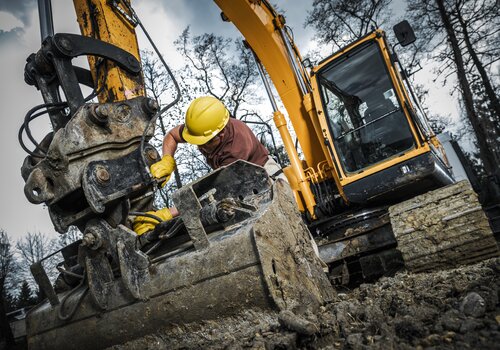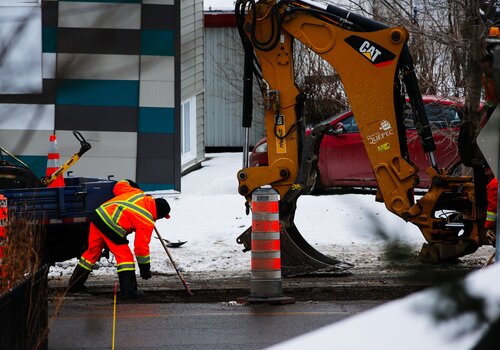Asphalt pavement is an excellent choice for sustainability options because it is 100% reusable, and it is one of the most widely recycled products. Asphalt pavements generate less waste of materials and produce fewer greenhouse gas emissions than concrete. Asphalt binder comes from fossil fuels that were never burned, so the CO2 is stored and never released into the atmosphere.
The amount of this binder that comes from fossil fuels can even be reduced by using reclaimed asphalt pavement (RAP) in some cases, allowing the original binder to be reused and reducing the need for more. This also reduces transportation needed for raw materials since local materials can be used.
Porous Asphalt
The Environmental Protection Agency (EPA) has recognized porous asphalt pavements as best practice for managing stormwater. This is because porous asphalt promotes infiltration. The filtered water can then safely replenish aquifers and local bodies of water.
This kind of asphalt even has another benefit in colder climates: it provides better traction than traditional asphalt on icy roads. Porous asphalt is versatile – it can be used to pave roads, playgrounds and more.
Warm-Mix Asphalt
Warm-mix asphalt is workable at lower temperatures as it is applied 20-40 degrees lower than hot-mix asphalt. The lower temperature has major benefits. Aside from providing a more comfortable environment for workers, lower temperatures are a better application option for cooler climates. Transportation of the material requires less fuel to maintain the temperature and can be transported longer distances. The already lowered temperature then allows roads to be reopened sooner than with hot-mix asphalt. Warm-mix asphalt is still fully compatible with RAP, too.
Rubberized Asphalt
Another eco-friendly pavement option is rubberized asphalt. Every year, 12 million tires become crumb rubber. The tires are shredded, and the steel wire is separated. The rubber is then broken down again, either by ambient grinding or shattered by being frozen in liquid nitrogen, and then can be mixed into pavement asphalt. In addition to the eco-benefits of recycling, rubberized asphalt has other benefits, like noise reduction properties. It’s also more economical since fewer raw materials are required and can last longer than other types of asphalt.
Pavement Recycling
As you’ve probably noticed, the different sustainable approaches to asphalt pavement are all interconnected, and pavement recycling is no different. There are several ways to recycle asphalt pavement by removing and transporting the asphalt or by in-place recycling techniques.
- Hot In-Place Recycling (HIR)
- Cold In-Place Recycling (CIR)
- Full-Depth Reclamation (FDR)
- Hot- & Warm-Mix Asphalt Recycling
As with everything else, the materials and processes have benefits for distinct aspects of the paving process. There are pros and cons to each approach. The best practice will differ for every region based on climate and local resources available.
You can learn more about pavement’s role in sustainability by attending panels from the Environment & Sustainability track during World of Asphalt in Nashville, Tennessee, March 25-27.
Stay tuned to the CONEXPO-CON/AGG 365 newsletter as we dive deeper into each of these pavement recycling techniques.
Photo credit: AGNORMARK/BIGSTOCKPHOTO.COM












